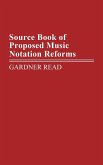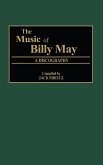Providing a general overview of comic music, this reference outlines the history of important comic musical genres, considers interconnections among seemingly disparate humorous repertory, and includes an extensive bibliography and discography. The narrative challenges the notion that serious works are more important than comic works. Many supposed tragic works include comic elements and abstract genres, such as the symphony or string quartet. The narrative discusses almost 1,000 works, each cross referenced to publication information. The bibliography includes over 800 books, dissertations, reference sources, and articles. By tracing the development of major comic genres, this unique guide to comic music also examines how absurdity influenced the avante-garde developments of the 20th century. This study of comic music will appeal to musicologists, musicians, and music students. The relationships drawn between familiar and obscure works allow for a fuller understanding of the aesthetics of comic expression. Cross-referenced throughout, this resource is a much needed and useful guide to further research.
Hinweis: Dieser Artikel kann nur an eine deutsche Lieferadresse ausgeliefert werden.
Hinweis: Dieser Artikel kann nur an eine deutsche Lieferadresse ausgeliefert werden.








